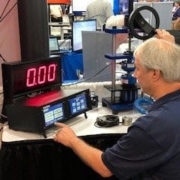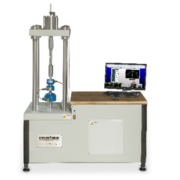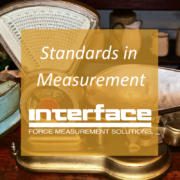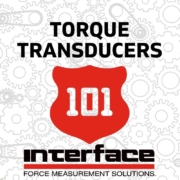Signal Conditioners 101
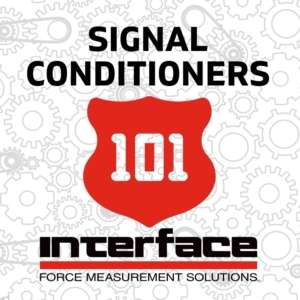 Signal conditioners are used in instrumentation, control systems, and measurement systems where accurate and reliable signal processing is a requirement. The purpose of a signal conditioner is to ensure that the electrical signal from a sensor is compatible with the input requirements of the subsequent signal processing equipment.
Signal conditioners are used in instrumentation, control systems, and measurement systems where accurate and reliable signal processing is a requirement. The purpose of a signal conditioner is to ensure that the electrical signal from a sensor is compatible with the input requirements of the subsequent signal processing equipment.
Primary features of signal conditioners include amplification, filtering, isolation, and linearization. It can perform various functions depending on the specific application and the type of signals.
Interface Signal Conditioners are used with a wide range of load cell and force measurement devices. Transducers convert force or weight into an electrical signal. The output signal of a load cell is typically in the form of a small electrical voltage that is proportional to the applied force.
Be sure to reference the Instrumentation Selection Guide to find instrumentation with signal conditioners that will best fit your force measurement application.
Understanding Signal Conditioners Use with Load Cells
Amplification: Load cells produce small electrical signals, which may require amplification to bring them to a usable level. Signal conditioners can include built-in amplifiers that increase the magnitude of the load cell signal. This amplification helps to improve the signal-to-noise ratio and enhances the sensitivity of the system.
Filtering: Load cell signals can be affected by electrical noise or interference, which can degrade the accuracy of measurements. Signal conditioners often incorporate filtering capabilities to remove unwanted noise and interference from the load cell signal. This ensures that the signal is clean and reliable.
Excitation: Load cells require an excitation voltage or current to function properly. Signal conditioners provide a stable and regulated excitation source to power the load cell. This excitation voltage is typically supplied to the load cell through the signal conditioner, ensuring consistent and accurate measurements.
Calibration and Linearization: Load cells may exhibit nonlinear characteristics, meaning that the relationship between the applied force and the output voltage is not perfectly linear. Signal conditioners can include calibration and linearization algorithms to compensate for these nonlinearities. By applying appropriate mathematical adjustments, the signal conditioner can provide a linear output that accurately represents the applied force.
Signal Conversion: Load cell signals are typically analog voltages, but they may need to be converted to digital format for further processing or transmission. Some signal conditioners include analog-to-digital converters (ADCs) that convert the analog load cell signal into digital data, enabling it to be processed by digital systems.
Signal Conditioner Considerations
- Form factor design: box mount, DIN rail, in-line cable, integral to load cell
- Output options: ±5/±10VDC, 0.1-5VDC, Current, Frequency, Digital
- Polarity: Bi-polar or unipolar
- Bandwidth
- Onboard filtering
- Power supply type: cable, built-in, wireless
- Noise immunity
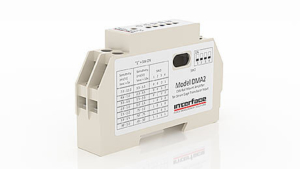 Interface Top Signal Conditioners
Interface Top Signal Conditioners
PRODUCT: DMA2 DIN RAIL MOUNT SIGNAL CONDITIONER
- User selectable analog output +/-10V, +/-5V, 4-20mA
- 10-28 VDC power
- Selectable full scale input ranges 5-50mV
- DIN rail mountable
- Push button shunt calibration
- 1000Hz bandwidth
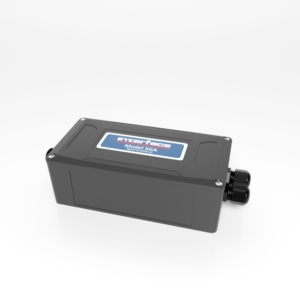 PRODUCT: SGA AC/DC POWERED SIGNAL CONDITIONER
PRODUCT: SGA AC/DC POWERED SIGNAL CONDITIONER
- User selectable analog output +/-10V, +/-5V, 0-5V, 0-20mA, 4-20mA
- 110VAC, 220VAC, OR 18-24VDC power
- Switch selectable filtering 1Hz to 5kHz
- Single channel powers up to four transducers
- Selectable full scale input range .06 to 30mV/V
- Sealed ABS enclosure
- Optional bridge completion and remote shunt activation module
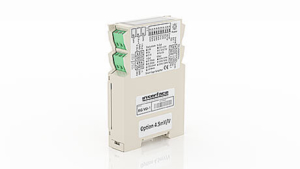 PRODUCT: ISG ISOLATED DIN RAIL MOUNT SIGNAL CONDITIONER
PRODUCT: ISG ISOLATED DIN RAIL MOUNT SIGNAL CONDITIONER
- Galvanically isolated power supply
- High accuracy
- +/-5VDC or +/-10VDC Analog output (4-20mA optional)
- 10-30VDC Power
- Switch selectable filtering 1Hz to 1kHz (up to 10kHz optional)
- Accepts inputs up to 4.5mV/V
- DIN rail mountable
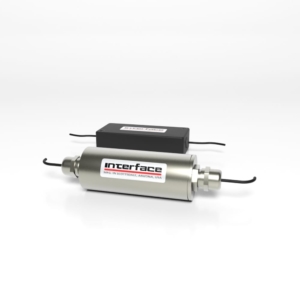 PRODUCT: CSC and LCSC-OEM INLINE SIGNAL CONDITIONERS
PRODUCT: CSC and LCSC-OEM INLINE SIGNAL CONDITIONERS
- IP67 stainless steel enclosure (CSC Only)
- CE approved (CSC Only)
- Zero and span adjustments
- 1 kHz bandwidth
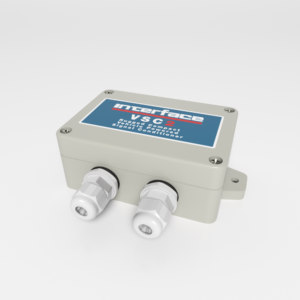 PRODUCT: VSC2 Rugged Compact Vehicle Powered Signal Conditioner
PRODUCT: VSC2 Rugged Compact Vehicle Powered Signal Conditioner
- High accuracy precision bi-polar differential amplifier
- ± 5 VDC Output
- Accepts inputs from ±1.4 to ±-4.2
- 1000 Hz low pass filter
- Rugged design and compact size
- Course, fine zero, and span adjustments
- Activate R-CAL (Shunt Cal) with internal switch
Signal conditioners ensure that the load cell’s output is optimized for accuracy, stability, and compatibility with the measurement or control system. They help mitigate noise, amplify weak signals, provide excitation, and perform calibration and linearization to ensure precise and reliable measurements of force or weight.
Visit the Interface Instrumentation Selection Guide to see all the products available with signal conditioning functionality.
Watch this Testing Lab Essentials Webinar Part 3 to learn more about the benefits and use cases of Interface Signal Conditioners.


